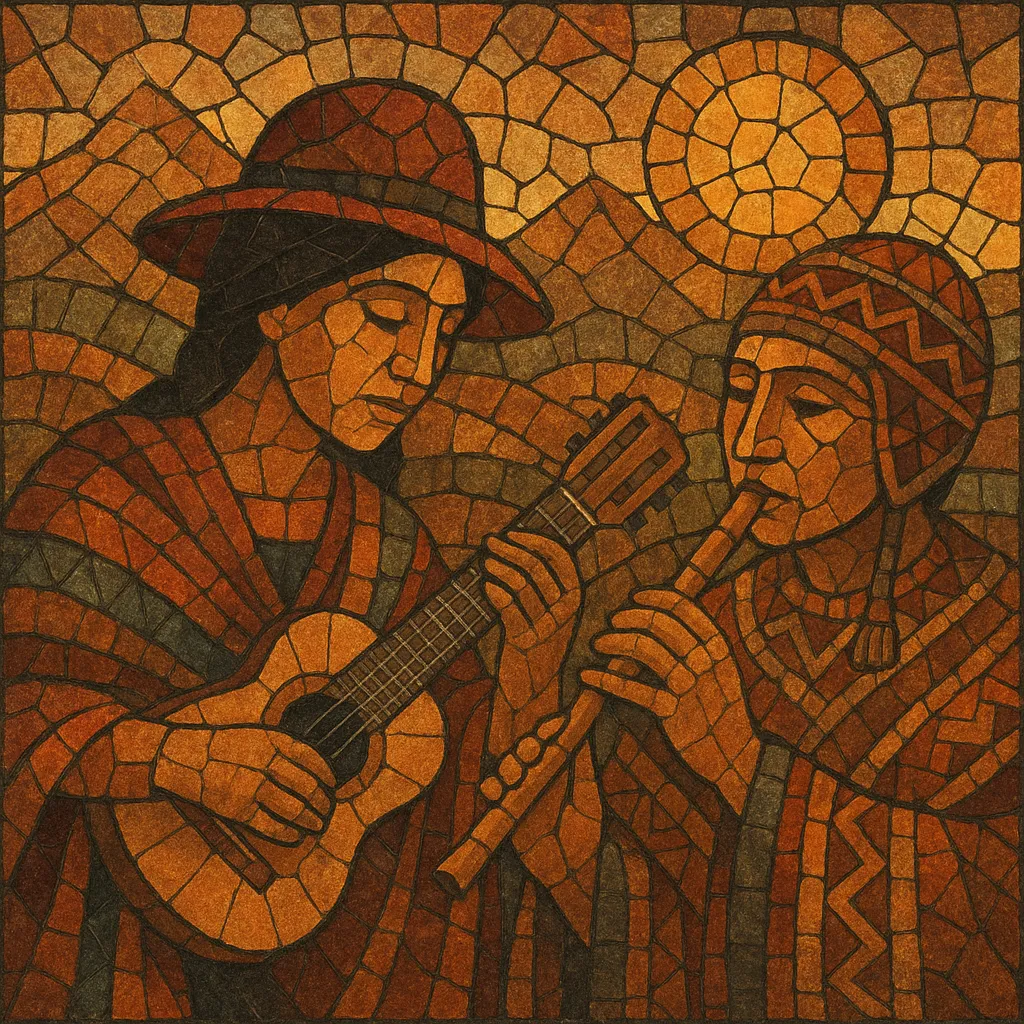Tonada potosina is a traditional song form from the Potosí region of Bolivia. It blends Iberian colonial "tonada" song aesthetics with Andean melodic and poetic sensibilities, and is typically performed with voices accompanied by charango, guitar, and Andean flutes such as quena and zampoña.
Rhythmically, it often sits in a gentle triple meter (3/4) or in a lilting 6/8 with Andean sesquialtera (hemiola) interplay. Melodies favor pentatonic and natural minor/Dorian colors, while lyrics dwell on love, longing, the mining life of Potosí, and regional devotion and festivity (e.g., Ch'utillos). The result is a tender, nostalgic style that can be either intimate and contemplative or lightly danceable.
The term "tonada" in Spanish America originally referred to secular songs of the colonial era. In Potosí—a wealthy mining center with a vibrant musical life—local singers and instrumentalists gradually adapted this Iberian song model to Andean tastes. By the 19th century, a distinct tonada potosina had emerged, marked by Quechua- and Spanish-language lyrics, triple-meter sway, and accompaniment on guitar-family instruments and early charango.
Across the early to mid-1900s, tonada potosina circulated through community gatherings, urban salons, radio, and local festivities. Ensembles expanded the accompaniment palette with charango, quena, zampoña, and bombo legüero-style drums, while maintaining a lyrical focus on love, memory, and the social realities of Potosí’s mining culture. The style’s gentle rhythmic profile and singable melodies helped it coexist alongside better-known Bolivian genres such as huayño, cueca, and bailecito.
From the 1960s–1980s Andean folk revivals, professional and semi-professional ensembles incorporated tonada potosina into concert repertoires, recordings, and cultural programs, helping codify performance practices (strumming patterns, vocal harmonies, and formal layouts). This period cemented the genre’s identity for stage and broadcast, without severing its ties to community performance and regional festivities (including the Ch’utillos celebration).
Today, tonada potosina endures as a cherished regional song form. It appears in educational programs, folklore festivals, and recordings by Bolivian folk artists, and it contributes to the broader Andean repertoire used by ensembles that bridge tradition and modern arrangement. While not as globally marketed as some Andean styles, it remains a living emblem of Potosí’s musical memory.


